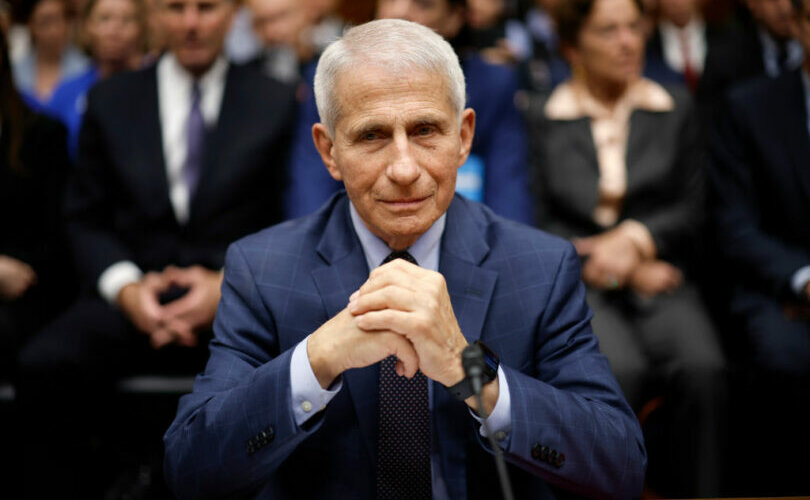Addictions
“Unscientific and bizarre”: Yet another Toronto addiction physician criticizes Canada’s “safer supply” experiment
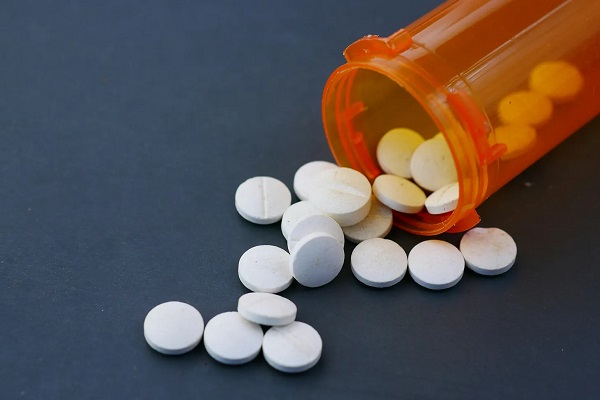
By Liam Hunt
“It seems to be motivated by a very small, vocal, and well-connected group of advocates” says Dr. Michael Lester
Dr. Michael Lester, a Toronto-based addiction physician with 30 years of experience, says Canada’s “safer supply” programs are “inherently dangerous” and causing “dystopian” community harms due to widespread fraud.
These programs claim to reduce overdoses and deaths by distributing free addictive drugs—typically 8-milligram tablets of hydromorphone, an opioid as potent as heroin—to dissuade addicts from consuming riskier street substances. Yet experts across Canada say recipients regularly divert (sell or trade) their safer supply on the black market to acquire stronger illicit drugs, which then fuels addiction and organized crime.
“I have a couple dozen patients in my practice who were drug-free prior to the advent of safe supply, and they’ve gone back to using opioids in a destructive way because of the availability of diverted hydromorphone,” said Lester. “Every single day that I go to work, people tell me they’re struggling with the temptation not to take diverted safe supply. They don’t want to take it, but they take it anyway just because it’s cheap and available.”
After safer supply programs became widely accessible across Canada in 2020, Lester’s patients reported an influx of 8-milligram hydromorphone tablets on the black market, coinciding with a crash in the drug’s street price from $15–$20 per pill to just $2. He now estimates that 80 percent of his patients struggling with opioid addiction have relapsed due to diverted safer supply, leading some to abandon treatment entirely.
“Even if it’s sold at the rock-bottom price of $2 or $3 a pill, a person would make tens of thousands of dollars a year, which would have a tremendous impact on their ability to buy other drugs,” he explained. “Selling hydromorphone is too tempting not to do it, which keeps them entrenched in the whole world of dealing with opioid users and having opioids in their premises.”
Subscribe for free to get BTN’s latest news and analysis – or donate to our investigative journalism fund.
Lester said safer supply is evidently “fueling organized crime” because drug seizures in Ontario now commonly include hydromorphone, “which wasn’t happening before.” He added that some individuals who try these diverted drugs later transition to stronger opioids, such as fentanyl.
In July, for example, the London Police Service announced that seizures of hydromorphone had increased by more than 3,000 percent in the city since 2020. According to London Police Chief Thai Truong, “Diverted safer supply is being resold into our community. There’s organized drug trafficking at the highest levels of organized crime, and there’s drug trafficking at the street level. We’re seeing all of it.”
While Lester acknowledges that safer supply can be useful as a “treatment of last resort, after traditional treatments have been tried and failed,” he said it is now being offered immediately to a wide variety of patients, which has “decimated” uptake of traditional addiction therapies, such as methadone and Suboxone.
As a result, conventional addiction clinics are now at risk of shutting down, meaning some communities could lose access to gold-standard treatments (i.e., methadone and Suboxone) while highly profitable, but unscientific, safer supply programs take over instead.
Lester said the evidence supporting safer supply is biased and “misleading” because, generally speaking, these studies simply interview enrolled patients and ask them to self-report whether they benefit from the programs. He noted that many safer supply researchers are public health academics, not doctors, meaning they lack clinical experience with the communities they study.
“It seems to be motivated by a very small, vocal, and well-connected group of advocates that has completely changed the landscape in addiction medicine treatment in a very short time,” he said.
Lester argues that some safer supply researchers seem to purposefully design their study methodologies to favor the programs and disregard systemic harms. He said this flawed science is then propagated by credulous journalists who fail to adequately scrutinize agenda-driven research.
While he personally knows “a couple dozen” colleagues in addiction medicine who regularly express skepticism about safer supply, many have been reluctant to speak out, fearing backlash from activist groups that “terrorize” critics.
“The stories are common of people being harassed and insulted on social media. We’ve heard of doctors being threatened [and] dropped from committees because they spoke out.”
For example, after Lester and his colleagues published two open letters criticizing safer supply in late 2023, they were targeted by a series of articles by Drug Data Decoded, a popular Canadian harm reduction Substack, which compared the doctors to Nazis and eugenicists. The articles were then widely shared on social media by safer supply activists.
Lester recalled an incident in which harm reduction activists targeted a doctor’s daughter at her high school in retaliation for her parent’s public criticism of safer supply.
“It’s just something that seems so unscientific and so bizarre in medicine,” he said. “Physicians just aren’t used to a powerful political lobby changing a treatment protocol.”
After Lester and more than a dozen of his colleagues wrote several public letters calling for reform and requested a meeting with Ya’ara Saks, the federal Minister of Mental Health and Addictions, they found themselves “sidelined and ignored.”
After months of delays, they were able to present their clinical observations to Saks, only to have her disregard them and incorrectly claim, weeks later, that criticism of safer supply is rooted in “fear and stigma.”
“The insults aren’t a big enough consequence to keep me from speaking my mind,” he declared.
After a short reflection, he then added, “If anyone doesn’t have a stigma against this population, it’s me. I’ve dedicated my life to helping them.”
Liam Hunt is a Canadian writer and journalist with an interest in humanism, international affairs, and crime and justice. This story is produced by the Centre For Responsible Drug Policy’s “Experts Speak Up” series in partnership with the Macdonald-Laurier Institute.
Our content is always free – but if you want to help us commission more high-quality journalism,
consider getting a voluntary paid subscription.
2025 Federal Election
Poilievre to invest in recovery, cut off federal funding for opioids and defund drug dens

From Conservative Party Communications
Poilievre will Make Recovery a Reality for 50,000 Canadians
Conservative Leader Pierre Poilievre pledged he will bring the hope that our vulnerable Canadians need by expanding drug recovery programs, creating 50,000 new opportunities for Canadians seeking freedom from addiction. At the same time, he will stop federal funding for opioids, defund federal drug dens, and ensure that any remaining sites do not operate within 500 meters of schools, daycares, playgrounds, parks and seniors’ homes, and comply with strict new oversight rules that focus on pathways to treatment.
More than 50,000 people have lost their lives to fentanyl since 2015—more Canadians than died in the Second World War. Poilievre pledged to open a path to recovery while cracking down on the radical Liberal experiment with free access to illegal drugs that has made the crisis worse and brought disorder to local communities.
Specifically, Poilievre will:
- Fund treatment for 50,000 Canadians. A new Conservative government will fund treatment for 50,000 Canadians in treatment centres with a proven record of success at getting people off drugs. This includes successful models like the Bruce Oake Recovery Centre, which helps people recover and reunite with their families, communities, and culture. To ensure the best outcomes, funding will follow results. Where spaces in good treatment programs exist, we will use them, and where they need to expand, these funds will allow that.
- Ban drug dens from being located within 500 metres of schools, daycares, playgrounds, parks, and seniors’ homes and impose strict new oversight rules. Poilievre also pledged to crack down on the Liberals’ reckless experiments with free access to illegal drugs that allow provinces to operate drug sites with no oversight, while pausing any new federal exemptions until evidence justifies they support recovery. Existing federal sites will be required to operate away from residential communities and places where families and children frequent and will now also have to focus on connecting users with treatment, meet stricter regulatory standards or be shut down. He will also end the exemption for fly-by-night provincially-regulated sites.
“After the Lost Liberal Decade, Canada’s addiction crisis has spiralled out of control,” said Poilievre. “Families have been torn apart while children have to witness open drug use and walk through dangerous encampments to get to school. Canadians deserve better than the endless Liberal cycle of crime, despair, and death.”
Since the Liberals were first elected in 2015, our once-safe communities have become sordid and disordered, while more and more Canadians have been lost to the dangerous drugs the Liberals have flooded into our streets. In British Columbia, where the Liberals decriminalized dangerous drugs like fentanyl and meth, drug overdose deaths increased by 200 percent.
The Liberals also pursued a radical experiment of taxpayer-funded hard drugs, which are often diverted and resold to children and other vulnerable Canadians. The Vancouver Police Department has said that roughly half of all hydromorphone seizures were diverted from this hard drugs program, while the Waterloo Regional Police Service and Niagara Regional Police Service said that hydromorphone seizures had exploded by 1,090% and 1,577%, respectively.
Despite the death and despair that is now common on our streets, bizarrely Mark Carney told a room of Liberal supporters that 50,000 fentanyl deaths in Canada is not “a crisis.” He also hand-picked a Liberal candidate who said the Liberals “would be smart to lean into drug decriminalization” and another who said “legalizing all drugs would be good for Canada.”
Carney’s star candidate Gregor Robertson, an early advocate of decriminalization and so-called safe supply, wanted drug dens imposed on communities without any consultation or public safety considerations. During his disastrous tenure as Vancouver Mayor, overdoses increased by 600%.
Alberta has pioneered an approach that offers real hope by adopting a recovery-focused model of care, leading to a nearly 40 percent reduction in drug-poisoning deaths since 2023—three times the decrease seen in British Columbia. However, we must also end the Liberal drug policies that have worsened the crisis and harmed countless lives and families.
To fund this policy, a Conservative government will stop federal funding for opioids, defund federal drug dens, and sue the opioid manufacturers and consulting companies who created this crisis in the first place.
“Canadians deserve better than the Liberal cycle of crime, despair, and death,” said Poilievre. “We will treat addiction with compassion and accountability—not with more taxpayer-funded poison. We will turn hurt into hope by shutting down drug dens, restoring order in our communities, funding real recovery, and bringing our loved ones home drug-free.”
Addictions
There’s No Such Thing as a “Safer Supply” of Drugs
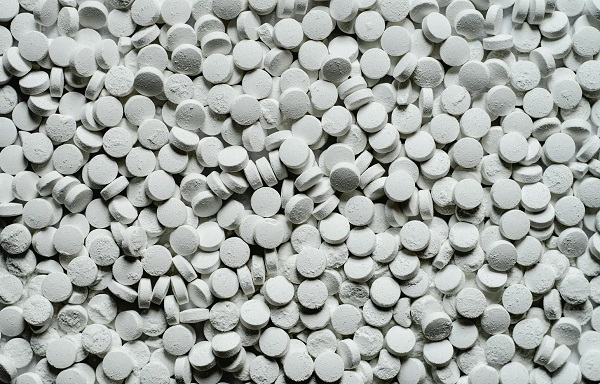
By Adam Zivo
Sweden, the U.K., and Canada all experimented with providing opioids to addicts. The results were disastrous.
[This article was originally published in City Journal, a public policy magazine and website published by the Manhattan Institute for Policy Research. We encourage our readers to subscribe to them for high-quality analysis on urban issues]
Last August, Denver’s city council passed a proclamation endorsing radical “harm reduction” strategies to address the drug crisis. Among these was “safer supply,” the idea that the government should give drug users their drug of choice, for free. Safer supply is a popular idea among drug-reform activists. But other countries have already tested this experiment and seen disastrous results, including more addiction, crime, and overdose deaths. It would be foolish to follow their example.
The safer-supply movement maintains that drug-related overdoses, infections, and deaths are driven by the unpredictability of the black market, where drugs are inconsistently dosed and often adulterated with other toxic substances. With ultra-potent opioids like fentanyl, even minor dosing errors can prove fatal. Drug contaminants, which dealers use to provide a stronger high at a lower cost, can be just as deadly and potentially disfiguring.
Because of this, harm-reduction activists sometimes argue that governments should provide a free supply of unadulterated, “safe” drugs to get users to abandon the dangerous street supply. Or they say that such drugs should be sold in a controlled manner, like alcohol or cannabis—an endorsement of partial or total drug legalization.
But “safe” is a relative term: the drugs championed by these activists include pharmaceutical-grade fentanyl, hydromorphone (an opioid as potent as heroin), and prescription meth. Though less risky than their illicit alternatives, these drugs are still profoundly dangerous.
The theory behind safer supply is not entirely unreasonable, but in every country that has tried it, implementation has led to increased suffering and addiction. In Europe, only Sweden and the U.K. have tested safer supply, both in the 1960s. The Swedish model gave more than 100 addicts nearly unlimited access through their doctors to prescriptions for morphine and amphetamines, with no expectations of supervised consumption. Recipients mostly sold their free drugs on the black market, often through a network of “satellite patients” (addicts who purchased prescribed drugs). This led to an explosion of addiction and public disorder.
Most doctors quickly abandoned the experiment, and it was shut down after just two years and several high-profile overdose deaths, including that of a 17-year-old girl. Media coverage portrayed safer supply as a generational medical scandal and noted that the British, after experiencing similar problems, also abandoned their experiment.
While the U.S. has never formally adopted a safer-supply policy, it experienced something functionally similar during the OxyContin crisis of the 2000s. At the time, access to the powerful opioid was virtually unrestricted in many parts of North America. Addicts turned to pharmacies for an easy fix and often sold or traded their extra pills for a quick buck. Unscrupulous “pill mills” handed out prescriptions like candy, flooding communities with OxyContin and similar narcotics. The result was a devastating opioid epidemic—one that rages to this day, at a cumulative cost of hundreds of thousands of American lives. Canada was similarly affected.
The OxyContin crisis explains why many experienced addiction experts were aghast when Canada greatly expanded access to safer supply in 2020, following a four-year pilot project. They worried that the mistakes of the recent past were being made all over again, and that the recently vanquished pill mills had returned under the cloak of “harm reduction.”
Subscribe for free to get BTN’s latest news and analysis – or donate to our investigative journalism fund.
Most Canadian safer-supply prescribers dispense large quantities of hydromorphone with little to no supervised consumption. Patients can receive up to 40 eight-milligram pills per day—despite the fact that just two or three are enough to cause an overdose in someone without opioid tolerance. Some prescribers also provide supplementary fentanyl, oxycodone, or stimulants.
Unfortunately, many safer-supply patients sell or trade a significant portion of these drugs—primarily hydromorphone—in order to purchase more potent illicit substances, such as street fentanyl.
The problems with safer supply entered Canada’s consciousness in mid-2023, through an investigative report I wrote for the National Post. I interviewed 14 addiction physicians from across the country, who testified that safer-supply diversion is ubiquitous; that the street price of hydromorphone collapsed by up to 95 percent in communities where safer supply is available; that youth are consuming and becoming addicted to diverted safer-supply drugs; and that organized crime traffics these drugs.
Facing pushback, I interviewed former drug users, who estimated that roughly 80 percent of the safer-supply drugs flowing through their social circles was getting diverted. I documented dozens of examples of safer-supply trafficking online, representing tens of thousands of pills. I spoke with youth who had developed addictions from diverted safer supply and adults who had purchased thousands of such pills.
After months of public queries, the police department of London, Ontario—where safer supply was first piloted—revealed last summer that annual hydromorphone seizures rose over 3,000 percent between 2019 and 2023. The department later held a press conference warning that gangs clearly traffic safer supply. The police departments of two nearby midsize cities also saw their post-2019 hydromorphone seizures increase more than 1,000 percent.
The Canadian government quietly dropped its support for safer supply last year, cutting funding for many of its pilot programs. The province of British Columbia (the nexus of the harm-reduction movement) finally pulled back support last month, after a leaked presentation confirmed that safer-supply drugs are getting sold internationally and that the government is investigating 60 pharmacies for paying kickbacks to safer-supply patients. For now, all safer-supply drugs dispensed within the province must be consumed under supervision.
Harm-reduction activists have insisted that no hard evidence exists of widespread diversion of safer-supply drugs, but this is only because they refuse to study the issue. Most “studies” supporting safer supply are produced by ideologically driven activist-scholars, who tend to interview a small number of program enrollees. These activists also reject attempts to track diversion as “stigmatizing.”
The experiences of Sweden, the United Kingdom, and Canada offer a clear warning: safer supply is a reliably harmful policy. The outcomes speak for themselves—rising addiction, diversion, and little evidence of long-term benefit.
As the debate unfolds in the United States, policymakers would do well to learn from these failures. Americans should not be made to endure the consequences of a policy already discredited abroad simply because progressive leaders choose to ignore the record. The question now is whether we will repeat others’ mistakes—or chart a more responsible course.
Our content is always free –
but if you want to help us commission more high-quality journalism,
consider getting a voluntary paid subscription.
-

 2025 Federal Election1 day ago
2025 Federal Election1 day agoMark Carney To Ban Free Speech if Elected
-
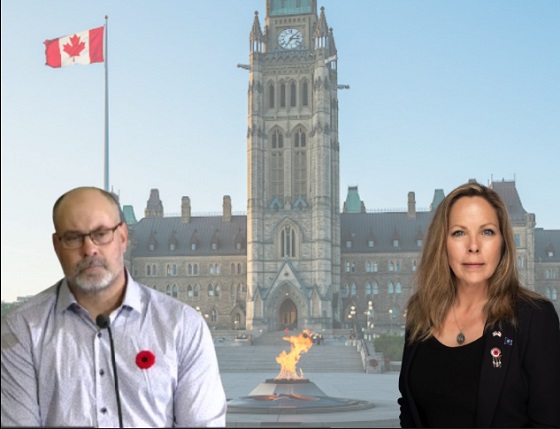
 Freedom Convoy2 days ago
Freedom Convoy2 days agoA Miscarriage of Justice
-
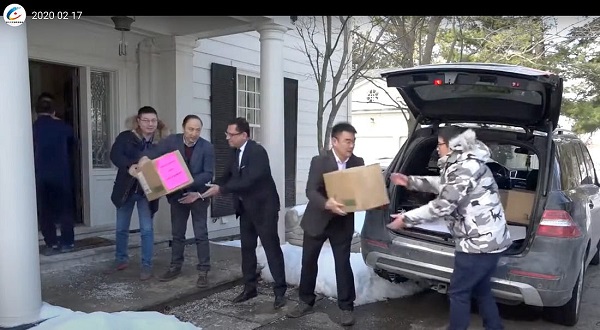
 2025 Federal Election17 hours ago
2025 Federal Election17 hours agoPPE Videos, CCP Letters Reveal Pandemic Coordination with Liberal Riding Boss and Former JCCC Leader—While Carney Denies Significant Meeting In Campaign
-
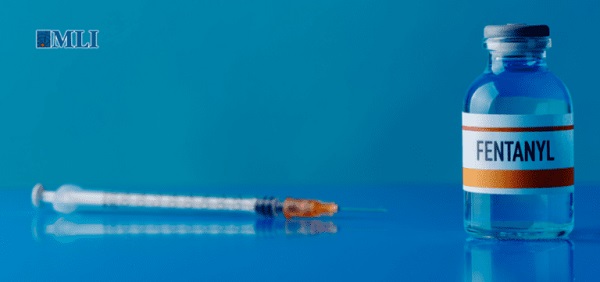
 Business2 days ago
Business2 days agoClosing information gaps to strengthen Canada’s border security and track fentanyl
-
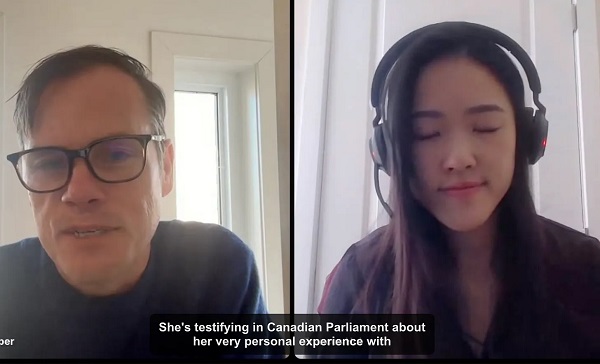
 espionage2 days ago
espionage2 days agoHong Kong Detains Parents of Activist Frances Hui Amid $1M Bounty, Echoing Election Interference Fears in Canada
-
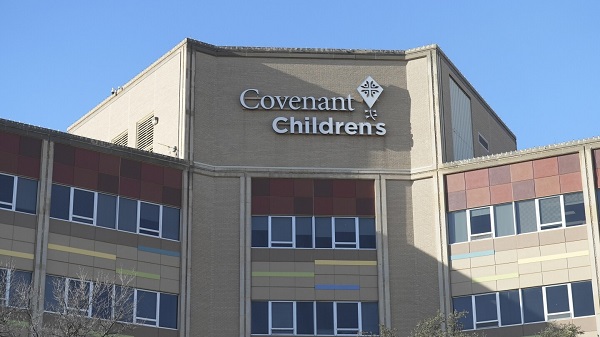
 Health1 day ago
Health1 day agoExpert Medical Record Reviews Of The Two Girls In Texas Who Purportedly Died of Measles
-

 2025 Federal Election23 hours ago
2025 Federal Election23 hours agoTrudeau and Carney Have Blown $43B on EVs
-

 2025 Federal Election8 hours ago
2025 Federal Election8 hours agoNo Matter The Winner – My Canada Is Gone





